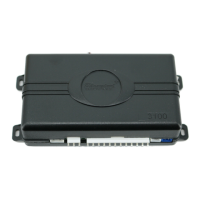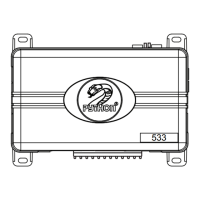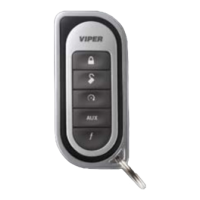18
©
2002
Directed Electronics, Inc.
Type G: Positive (+) Multiplex
NOTE: A GM Resistor Interface Module (GM P/N 12496739) may be used for this type of door
locking system. If using a Resistor Interface Module, use the instruction guide provided with the
Resistor Interface Module for this type of door locking system.
This system is found in 2001 and newer Aztek models. The door lock switch or door key cylinder
may contain either one or two resistors.
Single-Resistor Type
If one resistor is used in the door lock switch/key cylinder, the wire will pulse (+)12V in one
direction and less than (+)12V when operated in the opposite direction.
Two-Resistor Type
If two resistors are used in the factory door lock switch/key cylinder, the switch/key cylinder will
read less than (+)12V in both directions.
Determining the Proper Resistor Values
To determine the resistor values, the door lock switch/key cylinder must be isolated from the factory
door lock system. For testing, use a calibrated digital multimeter that is set to ohms.
1. Cut the output wire from the door lock switch/key cylinder in half.
2. Test with the meter from the switch side of the cut door lock switch/key cylinder wire to a
reliable constant (+)12V source. Some good constant (+)12V references are the power input
source to the door lock switch/key cylinder, the ignition switch power wire, or the (+) terminal
of the battery.
3. Operate the door lock switch/key cylinder in both directions to determine the resistor values. If
the multimeter displays zero resistance in one direction, no resistor is needed for that direction.
4. Once the resistor value(s) is determined, refer to the wiring diagram for proper wiring.
IMPORTANT! The H2/A and H2/B wires are not required for wiring the door locks. For
detailed wiring instructions for these two wires, refer to the beginning of the Door Lock
Harness (H2) Wire Connection Guide section.Depending on the type of door lock system,
there may be additional H2 harness wires that are not used for wiring the door locks.
IMPORTANT! To ensure an accurate resistance reading, do not touch the resistor or
leads during testing.

